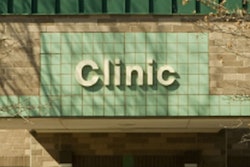
The online consumer ratings website Yelp.com isn't just for restaurant reviews: Patients are using it to grade their imaging center experiences, according to a study published online in the Journal of the American College of Radiology.
So what makes for a positive encounter? It turns out patients are most focused on service-related factors such as how long they had to wait and whether the receptionist was friendly, rather than issues such as the quality of equipment or the education and training of radiologists.
The findings jibe with the increasing focus on patient-centric healthcare and the use of patient feedback to set reimbursement rates and rank physician performance. For example, the U.S. government and the Centers for Medicare and Medicaid Services (CMS) have both established performance-based initiatives that include patient satisfaction rankings, and medicine-specific rating sites such as HealthGrades.com and Vitals.com incorporate patient responses when calculating physician performance scores.
That's why focusing on good service -- such as how receptionists and technologists treat patients -- can boost a practice's reputation, wrote the group led by Dr. Ankur Doshi of NYU Langone Medical Center.
"Although patients often do not choose their radiologist, they do often choose their imaging center, [which suggests] the need to strive for high-quality service at the practice level, beyond the provision of high-quality image acquisition and interpretation," the researchers wrote. "Maintaining a favorable public perception of radiology as a specialty requires an overall positive patient experience during imaging encounters" (JACR, October 27, 2015).
Yelpers unite
Why investigate what patients say on Yelp? Because social media is changing the way patients make healthcare decisions, Doshi told AuntMinnie.com via email.
"I routinely consult Yelp.com for almost everything, from restaurants to barber shops, so when a family member needed a brain MRI, I turned to the site to locate a high-quality imaging center in their area," he said. "I noticed that many patient reviews did not mention factors that I personally considered very important, like imaging equipment and result reporting. Given the increasing attention to patient satisfaction, I was interested in identifying the factors that patients perceive as important when it comes to evaluating radiology imaging centers."
 Dr. Ankur Doshi from NYU Langone Medical Center.
Dr. Ankur Doshi from NYU Langone Medical Center.Doshi's group did a Yelp search for the terms "diagnostic imaging," "imaging center," and "radiology"; the team identified 126 outpatient centers from 46 U.S. cities to include in the study. These centers had 1,009 patient reviews, comprising more than 2,500 individual comments. The researchers coded the comments as relating to either the radiologist or other service components at the center and noted whether the comments were positive or negative.
In all, 86% of patient comments related to service quality aspects of the centers. The three most common positive comments pertained to technologist professionalism (27.4%), receptionist professionalism (20.2%), and office wait times (13.7%). The most common negative comments related to office wait times (22%), receptionist professionalism (17.4%), and billing issues (13.2%).
Only 14% of comments pertained to radiologist-related factors -- which could be due to a lack of direct interaction between patients and radiologists, according to the researchers.
"The infrequency of radiologist-related comments may serve as a call to action for radiologists to increase their visibility and interactions with patients at imaging centers," the group wrote. "The [American College of Radiology (ACR)] Imaging 3.0 initiative provides strategies for achieving this aim."
Service with a smile
It's no surprise that receptionist and technologist behavior is a key factor in the experience of a patient, according to Doshi and colleagues.
"Receptionists initially greet the patient, setting the tone for the remainder of the visit," they wrote. "In addition, receptionists have an impact on the encounter via the way in which they address the patient, maintain confidentiality while patients check in, and handle office delays."
Meanwhile, technologists directly interact with patients throughout the imaging exam process, they added.
In any case, the results show the extent to which ancillary center staff members -- schedulers, technologists, receptionists, and billers -- influence the imaging center experience for patients. So how can imaging centers promote a service-centered ethic? Training helps, Doshi said.
"Receptionists and technologists manage a large volume of patients daily, and [they] frequently must multitask," he told AuntMinnie.com. "This may become overwhelming at times and could cause the quality of customer service to suffer. Potential ways to encourage a high level of care in this regard are through training programs, more efficient scheduling, and ensuring sufficient staffing."




















